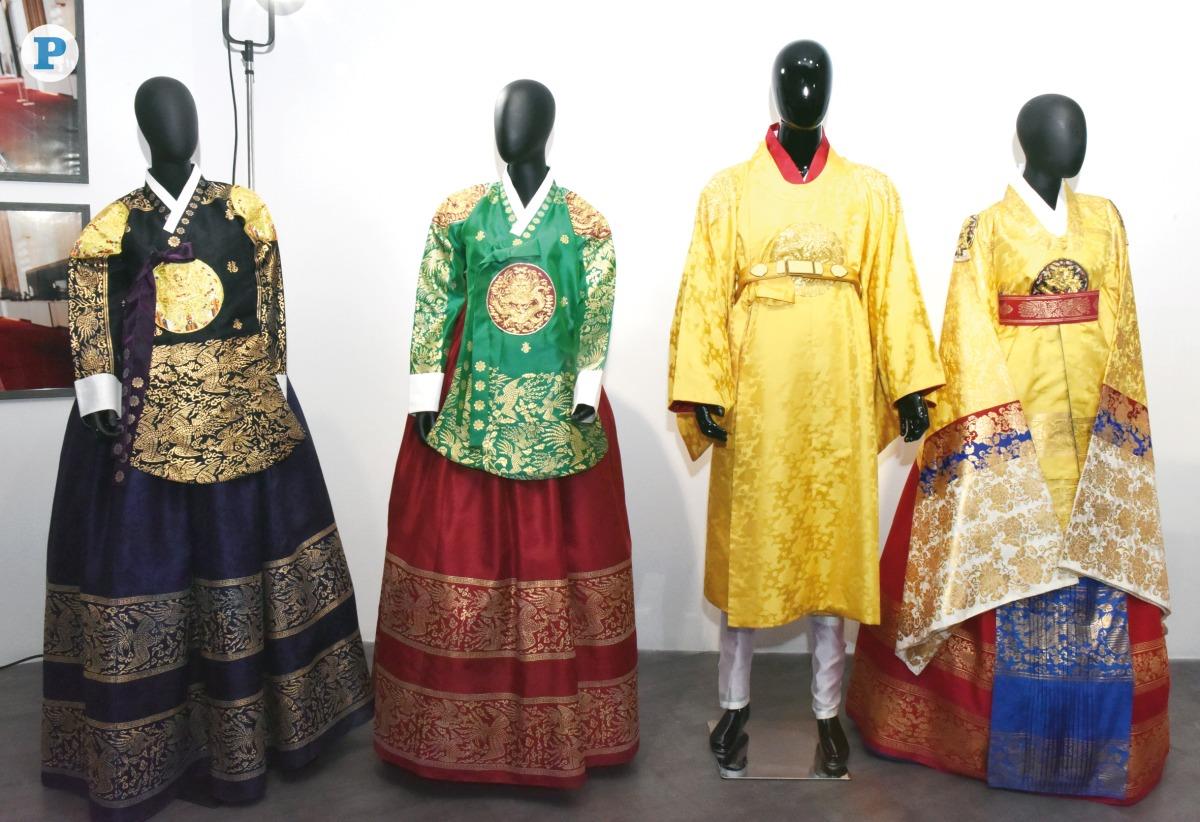
Hanbok In Katara: Exploring Timeless Beauty Of Korea's Traditional Attire
Doha, Qatar: 'Hanbok', Korea's traditional attire is considered among the prominent cultural clothing around the globe. The attire-worn by men, women, and children-goes back for more than 2,000 years to the Three Kingdoms period (1st century BC-7th century AD) of Korea.
At present, the vibrant and intricately designed traditional wear has garnered global popularity due to its ubiquitous presence in films, social media, and fashion as a result of South Korea's strong cultural influence worldwide.
Through the Korean Embassy in Qatar, a total of 20 authentic Hanboks have been flown from Seoul to be showcased in“The Exhibition of Hanbok: Traditional Korean Clothing & Korea-Qatar 50th Anniversary photos” in Katara.
Hanbok for men (left) and women (right) in an exhibition at Katara Cultural Village. Photos by Salim Matramkot/ The Peninsula
The exhibition, which was unveiled on Tuesday, November 26, features Hanbok typically worn at various occasions such as daily wear, weddings, and religious ceremonies from different eras including the Joseon Dynasty.
In his speech, the Ambassador of Korea to Qatar H E Yun Hyunsoo spoke on the importance of 'Hanbok' in Korean culture, and the significant transformation it undergoes in contemporary times.
“Hanbok has a long history dating back to over 2,000 years,” he said,“While it has evolved and modified throughout the centuries, Hanbok continues to be an enormous part of Korean culture and lives.”
Ceremonial headgears for women traditional worn with Hanbok. Photos by Salim Matramkot/ The Peninsula.
He later added,“One of the unique characteristics of Hanbok is the use of five traditional colours: blue, red, yellow, white, and black. These colours represent a concept of harmony. Each of these colours represents different elements.”
The event was also attended by the General Manager of Katara Cultural Village Foundation, Prof. Dr. Khalid Ibrahim Al Sulaiti, along with guests and officials.
The event was also attended by the designer of the exhibited Hanboks, Ham Eun-Jeong, whose designs have been worn by famed actors and actresses in hit Korean series such as Netflix's Under the Queen's Umbrella.
Hanboks displayed in an exhibition at Katara Cultural Village.
During the event, she explains the difference between 'Hanbok' for men and women.
For women's Hanbok, the attire is composed of an upper jacket known as 'jeogori' and a skirt called 'chima' which becomes wider towards the bottom and naturally forms pleats.
As for men's Hanbok, it consists of a similar jacket ('jeogori') and a pair of pants known as 'baji'.
A Hanbok displayed at The Exhibition of Hanbok: Traditional Korean Clothing & Korea-Qatar 50th Anniversary photos in Katara. Photo by Salim Matramkot/ The Peninsula
Apart from the clothing, various accessories were also on display such as ceremonial headgear for women, and 'Gat', a traditional hat worn by men along with Hanbok.
Traditionally, the Hanbok's design, including accessories, fabrics, and colours indicate the wearer's social background, rank, and station.
As part of the event's programme, the winners of the Korea-Qatar 50th anniversary photo contest were also announced. Eight winners were selected across the contest's three categories: Political and Economic Cooperation, Cultural and Human Exchange, and History and Tradition.
The exhibition will continue until December 10, 2024, from 10am to 10pm at Building 47, Gallery 1 in Katara.

Legal Disclaimer:
MENAFN provides the
information “as is” without warranty of any kind. We do not accept
any responsibility or liability for the accuracy, content, images,
videos, licenses, completeness, legality, or reliability of the information
contained in this article. If you have any complaints or copyright
issues related to this article, kindly contact the provider above.

















Comments
No comment